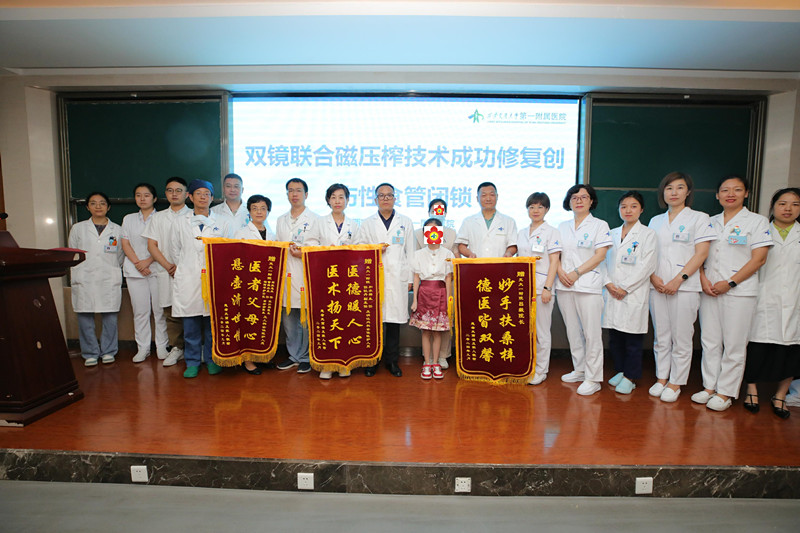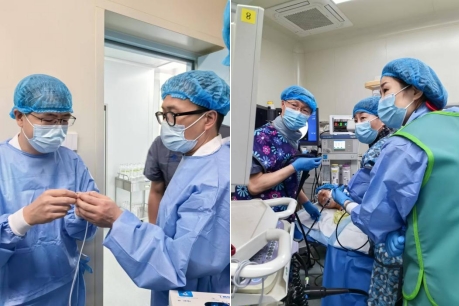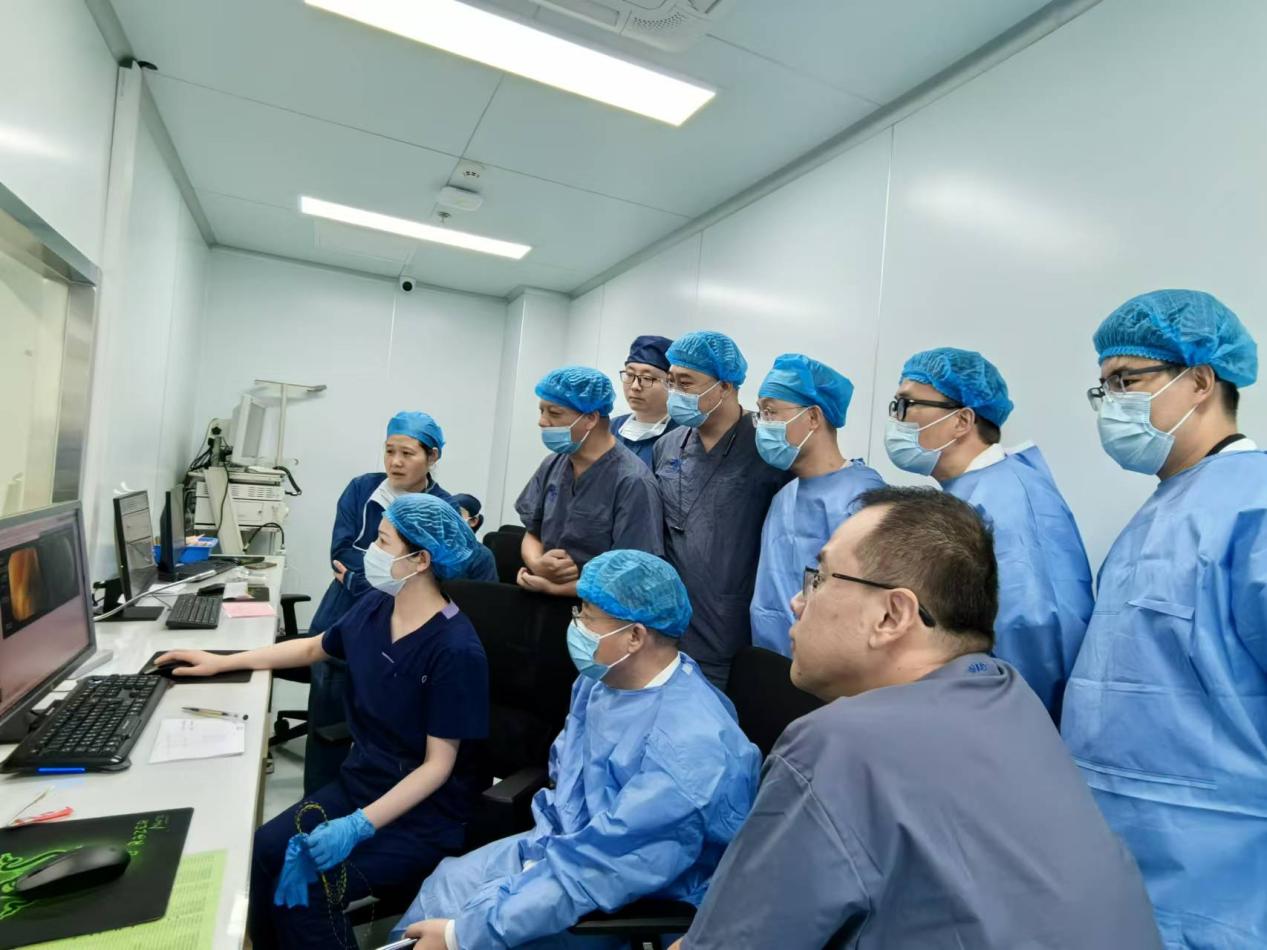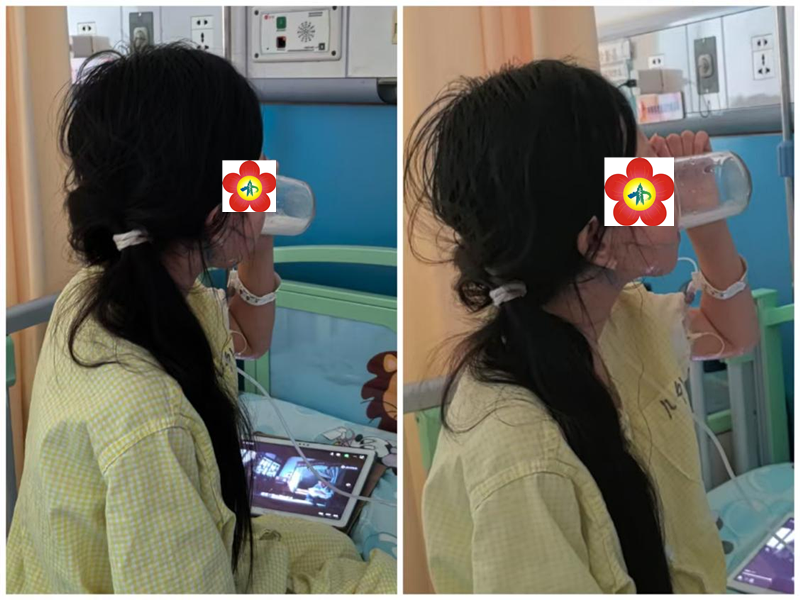On September 4, 2024, the First Affiliated Hospital (FAH) of Xi'an Jiaotong University (XJTU) successfully treated a child with traumatic esophageal atresia with magnetic compression technique. Tong Tong (not her real name), who underwent over 20 different types of operations, was finally recovered and discharged.

At 9 years old, Tong Tong unfortunately suffered from multi-organ injuries due to a serious car accident. Although she was saved after 6 major operations, she could not temporarily eat orally because of esophageal rupture. Hence, she had to receive injection of liquid food via the gastrostomy tube in the abdomen, which severely restricted nutritional intake, leading to malnutrition for a long period of time.
To further receive effective treatment, Tong Tong, accompanied by her family members, could not be treated timely because of the difficulty and risk of surgery in the 5-year process of seeking medical treatment. After medical consultation in multiple hospitals, they were admitted to FAH, hoping to receive proper treatment through magnetic surgery technique. Under the coordination of President Lyu Yi, relevant departments including hepatobiliary surgery, thoracic surgery, gastroenterology, urology, anesthesiology and perioperative medicine, radiology and nutrition were organized to conduct multidisciplinary team (MDT) consultations and complete all preoperative assessments for Tong Tong in the shortest time possible. Finally, it was decided to perform dual-endoscopy combined with magnetic compression technique for esophageal atresia.
Intraoperatively, according to the characteristics of the esophagus, President Lyu Yi, Director Cao Zhenjie from Department of Pediatric Surgery and Physician Zhang Hongke used a 12-mm magnetic block in diameter for magnetic compression. Director He Shuixiang and Deputy Director Ren Mudan from Department of Gastroenterology inserted an endoscope into the mouth and stomach simultaneously. Under the guidance of endoscopic direct vision and X-ray fluoroscopy, magnetic rings were placed into the proximal and distal ends of the esophageal atresia, respectively. Through the interaction of two magnetic rings, the compressed tissues became necrotic. Two magnetic rings were successfully placed and connected, and stably fixed. Postoperatively, under professional treatment and attentive nursing by Director Zhou Xihui’s team, Tong Tong was awakened and successfully extubated.


At postoperative 16 days, Tong Tong could orally drink water for the first time in past five years. On the 28th day after surgery, Director He Shuixiang and Deputy Director Ren Mudan performed gastroscopy for Tong Tong, excised hyperplastic granulation tissues, successfully removed two magnetic rings and placed them into the stomach tube to support the reconstructed esophagus. At postoperative 35 days, Deputy Director Ren Mudan successfully placed an esophageal stent, enabling the patient to orally eat semi-solid food, chew and swallow, indicating the success of magnetic anastomosis technique for esophageal atresia. The success of this procedure is the achievement of multi-disciplinary cooperation and another major breakthrough in the field of engineering medicine in FAH.
